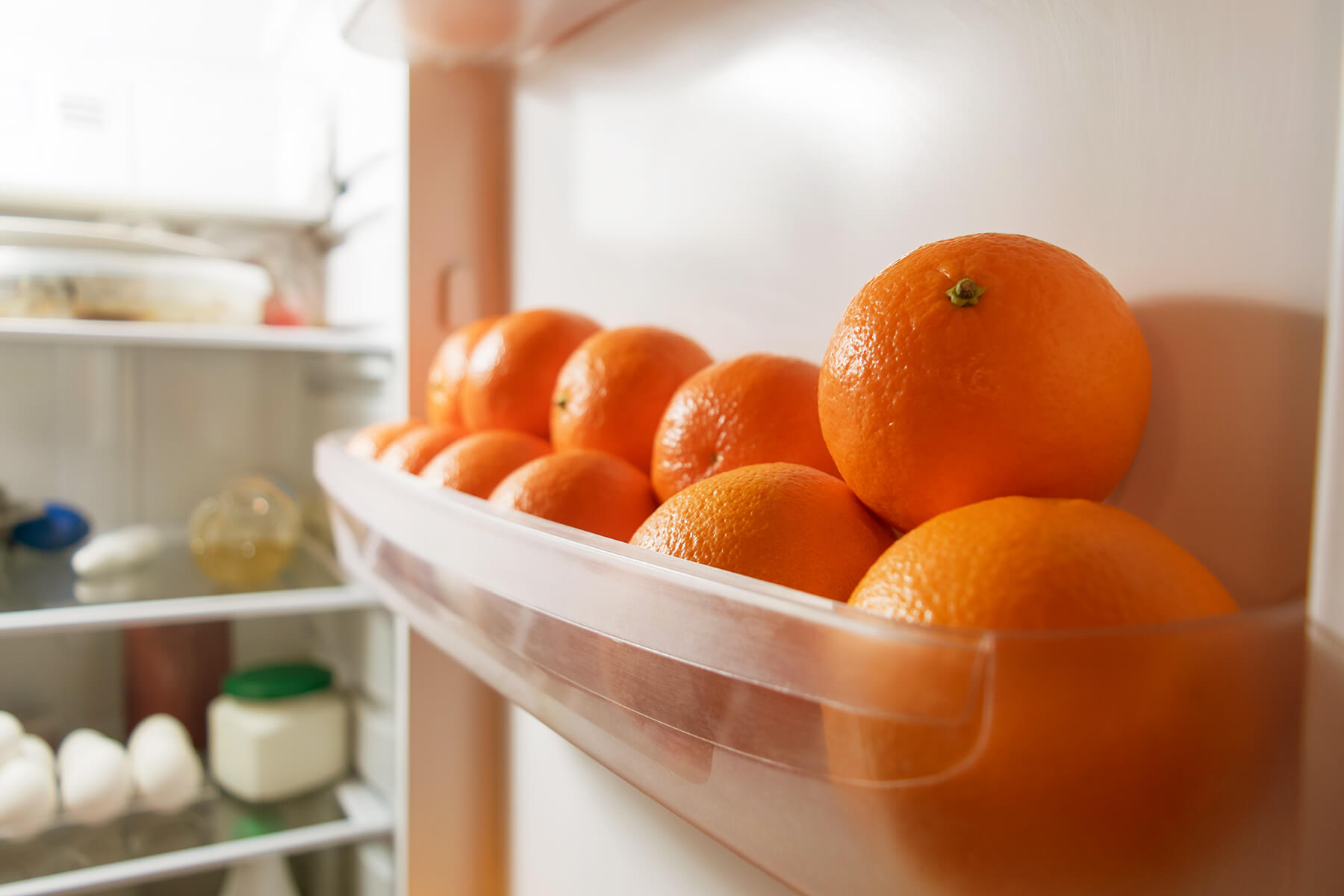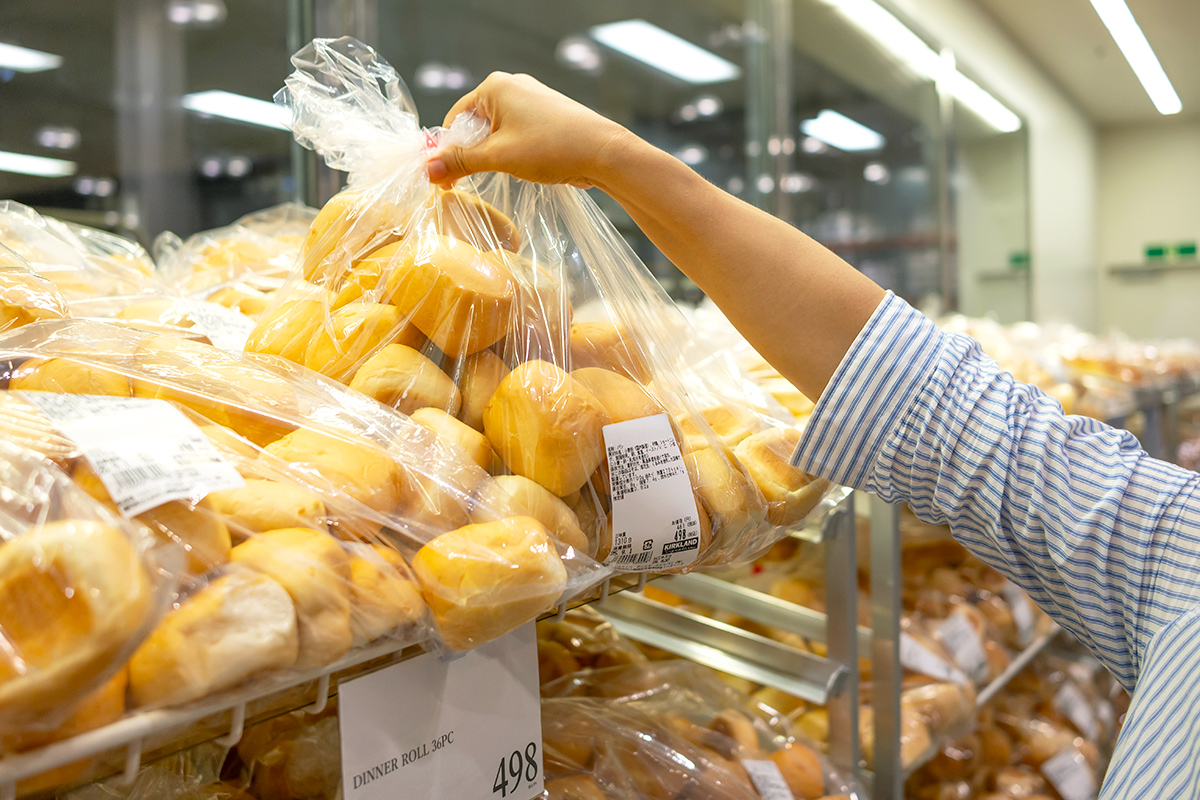Food prices have climbed 28% since 2019, squeezing household budgets and making saving money on groceries a top priority for many families. Buying less is an option, but making your food go further and last longer is a better one. Fortunately, there are numerous hacks to keep food fresh and reduce waste. As a trained…
1. Keep Dry Herbs and Spices Out of the Light
Keeping your most-used herbs and spices close to the stove makes cooking more convenient, but unfortunately, it’s also the place where they’ll deteriorate most quickly. They’ll be exposed to frequent temperature changes, humidity from the foods you cook, and — most importantly — exposure to light.
Ground spices and dried herbs lose their oomph pretty quickly when they’re out in the open, especially in direct sunlight. If you aren’t going to use them up within four to six months, store them in a dark place such as a pantry or closed cupboard.

2. Get Airtight Containers for Lesser-Used Dry Goods
Many pantries are stocked with dry goods such as flour, rice, cereal, and crackers. But if these items are stored in open boxes or cartons, it won’t be long before they begin to lose freshness. They’ll become stale and lose flavor over time, and there’s always the risk of them attracting insects or rodents, too.
Packing dry goods into airtight containers can help prolong their shelf life, which is what pantry items are all about. Storage canister sets, plastic containers with tight-fitting lids, and Mason jars are all good options that will extend the life of your dry goods. Better yet, you can even get an inexpensive battery-operated vacuum sealer to suck the air out of the Mason jars.

More from our network
House Outlook is part of Inbox Studio, which publishes content that uplifts, informs, and inspires.
3. Refrigerate Whole Grains
While most dry goods don’t require refrigeration, whole grains are an exception. They’re packed with nutrients and fiber, so kudos to you if you keep them on hand, but storing them in the pantry is not recommended long-term.
Whole grains, by definition, still contain their bran and germ, along with natural oils. Those oils will turn rancid if they’re allowed to sit in the open air at room temperature. So pack up your stone-ground cornmeal, cracked wheat, and even whole-wheat flour into bags or containers, and find room for them in the fridge. They’ll last longer, taste better, and won’t spoil. If you have space in your freezer, you can store whole grains for up to a year as long as they’re well packaged.

4. Don’t Freeze Meats in Their Original Packaging
If you want your meat, fish, or poultry to last as long as possible in the freezer, rule No. 1 is not to freeze them in their retail packaging from the supermarket. Those plastic-wrapped trays contain excess air that draws moisture out of the frozen food and leads to freezer burn. The next time you return from the grocery store, open up those packages and transfer your meats into heavy-duty freezer bags, removing as much air as possible.
The only exception to this rule is meat that’s packed in airtight wrapping during the manufacturing process. Those cryo-packed meats are beautifully sealed, so they’re good to go straight into the freezer.



5. Refrigerate “Things You Don’t Refrigerate”
What do bananas and avocados have in common? Well, they both notoriously go from “not quite ready” to “past their prime” in the blink of an eye. Common wisdom says you shouldn’t refrigerate them, as it can interfere with the ripening process. But here’s the thing: If you refrigerate them once they hit that moment of perfect ripeness (however you define it, in the case of bananas), they will stay that way for a few extra days. The cold temperature slows the ripening process to a crawl, so instead of having your bananas and avocados turn to mush, you’ll have additional time to use them up. Bananas’ skins will indeed turn dark, but that’s deceptive. The fruit inside remains perfect.

6. Refrigerate Your Citrus
Citrus fruits don’t need refrigeration, and many websites (us included) will tell you so. Citrus won’t go soft and dark like bananas, for example, or bruise like apples and pears. But if you eat only one or two a day, and buy them in bulk for the cost savings, you’ll run up against their shelf life pretty quickly.
Instead of leaving your citrus out on the counter, place them in nonporous bags (plastic if you must, but ideally something reusable) and store them in the fridge. The bags will protect them from the dry refrigerator air, and they’ll stay fresh and juicy for longer.

7. Treat Fresh Herbs Like Cut Flowers
Don’t you love it when recipes call for a tablespoon of minced fresh herbs, but stores only sell them in a bunch the size of your head? If groceries had high school yearbook superlatives, herbs would be crowned “Most Likely To Turn to Compost in the Crisper Drawer.”
Instead of storing herbs in a produce bag in the crisper, trim the bottoms of the stems and place them in a glass of water on a sunny windowsill. They’ll continue to grow and stay fresh for days, especially if you cover them with a plastic bag to act as a mini-greenhouse and retain extra moisture. Just be sure to change the water every day or two to prevent mold growth.

8. Puree Excess Herbs
I grow a lot of fresh herbs in my garden, dehydrating many of them for winter use. However, some herbs (such as dill and cilantro) lose a lot of flavor when dehydrated, while others (like sage) change flavor, so I puree those instead. Pureeing is another good way to get the most out of those oversized supermarket herb bundles after you’ve used what you need for a recipe.
I throw mine into a food processor (a high-power blender works, too) with just enough oil to help them puree to a paste. Then you can spoon the herb-and-oil mixture into ice cube trays for freezing. For larger quantities, scoop the puree into zipper storage bags, flatten and score it, and freeze the bags on a flat surface. Cubes give you a predictable amount every time, or with the flat-pack method, you can break off as big or as little a piece as you need. I do that with my extra garlic and garlic scapes, too.

9. Keep Extra Ice Cube Trays on Hand for Leftovers
Ice cube trays are cheap at the dollar store, and you should have them in several sizes and shapes for preserving leftovers. Got a half-carton of chicken broth? Cube it. Leftover wine? (I know, I know.) Cube it. Herbs to salvage? Puree and cube them. That whole can of tomato paste, minus the one tablespoon your recipe called for? Cube it.
Once the cubes are frozen, transfer them to a freezer bag for storage and squeeze out as much air as possible. Pro tip: Separate the ice cube trays intended for savory uses to prevent your lemonade or bourbon from tasting like garlic and rosemary.

10. Fluff Up Your Mesclun Mix
Those big packs of salad greens you buy at the supermarket are a pretty good value, as long as you use them before they become slimy. Here’s the trick to making them last longer: Give them some room to breathe. When they’re packed tightly in their original clamshell container, there’s no room for air circulation and they’ll quickly start to wilt and liquify. So dump the whole thing into a big bowl, toss the leaves so they’re nice and light, and then pack them loosely into a couple of containers.
Add a sheet of paper towel to each container to absorb any excess moisture. Or, if you eat salad every week, consider purchasing some vented produce containers, which are designed for optimal airflow. One final step that helps a lot (speaking as a former chef) is tossing the greens in a bowl every day, so you can spot and remove any leaves that are beginning to wilt. It’s the equivalent of removing the proverbial “one bad apple that spoils the barrel,” and restaurants do this all the time.

Final Quick Tips
These 10 hacks are just the tip of the iceberg. Here are a few other quick pieces of advice for longer-lasting food:
• Get a vacuum sealer, if you can. The bags aren’t cheap, but oxidation is the enemy of shelf life, and vacuum sealing helps extend the storage life of countless food items.
• Learn how the pros organize a fridge for storage life and food safety. (Don’t put perishable stuff in the door!) Here’s a helpful chart for reference.
• Have a plan before you go shopping. Don’t buy that bulk pack of chicken breasts if you won’t have time to separate and freeze the extras, or if you’re currently out of storage bags.
• Put a couple of inexpensive thermometers in your fridge and freezer, so you can easily monitor their temperatures. If they aren’t cold enough, your groceries won’t last like they should and may not even be food-safe.
• Ask friends and family for their favorite food-saving frugality tips, or what they do with [food item you struggle with]. There’s a lot of accumulated wisdom to tap into, if you just ask.

















